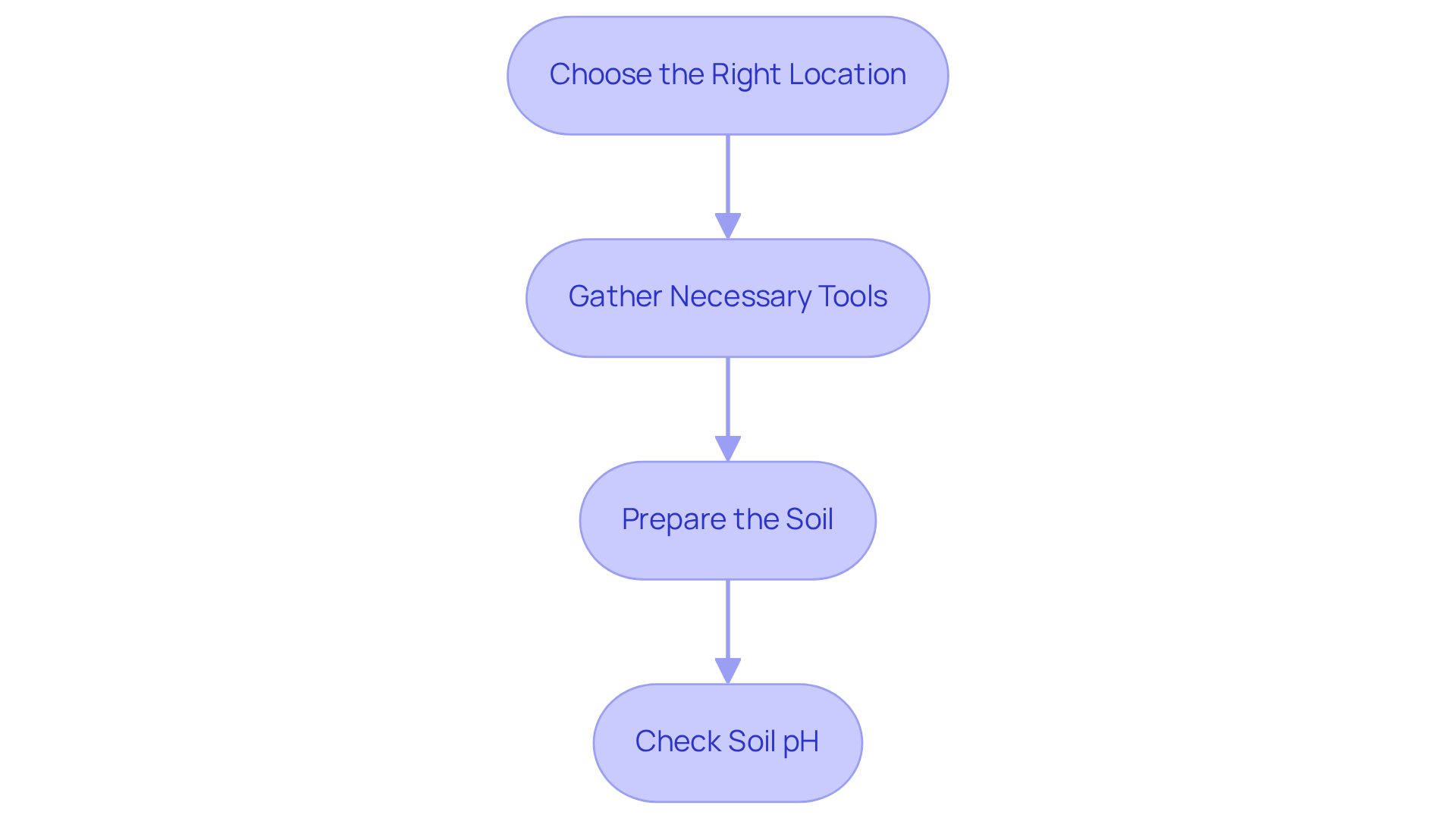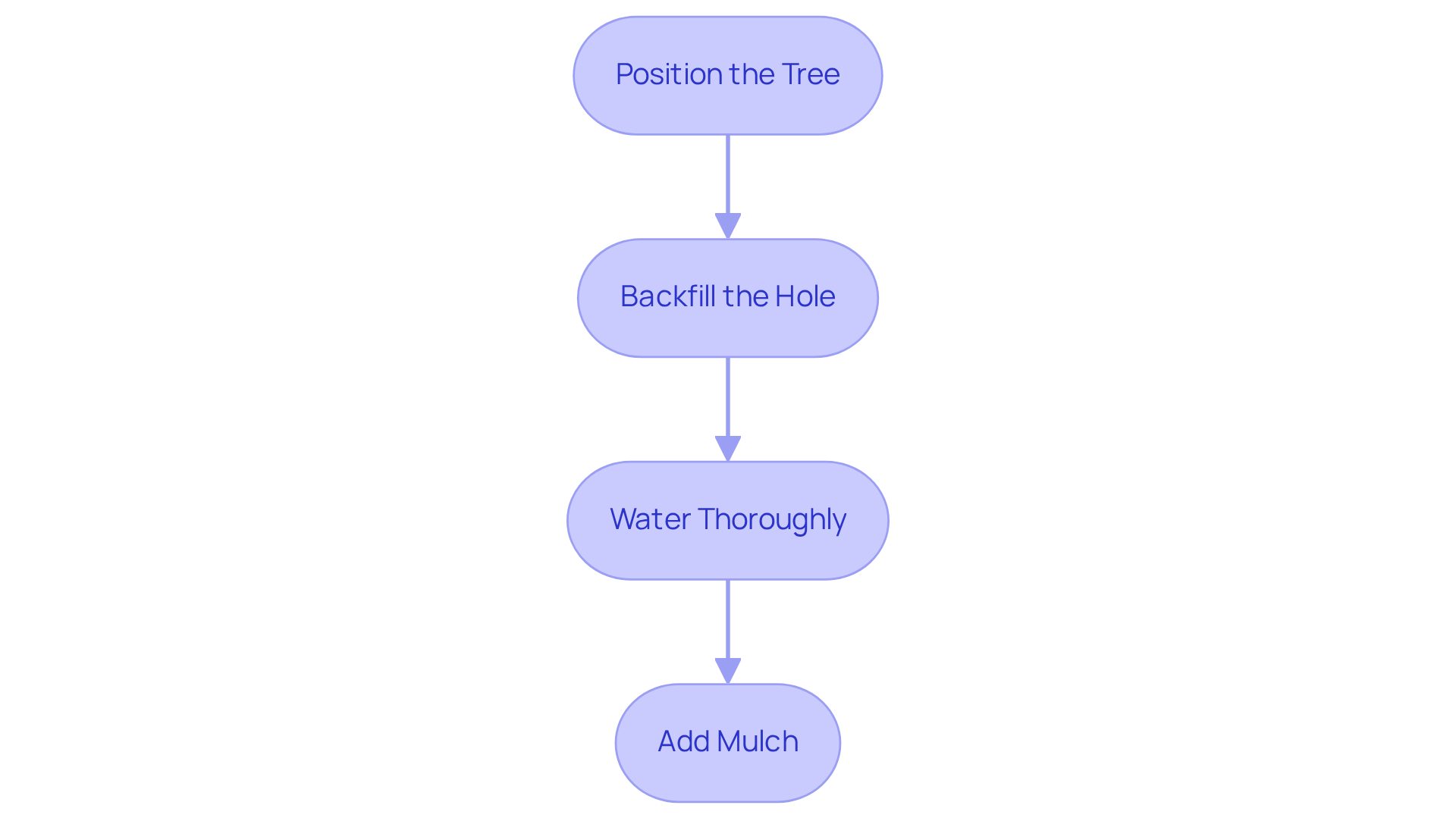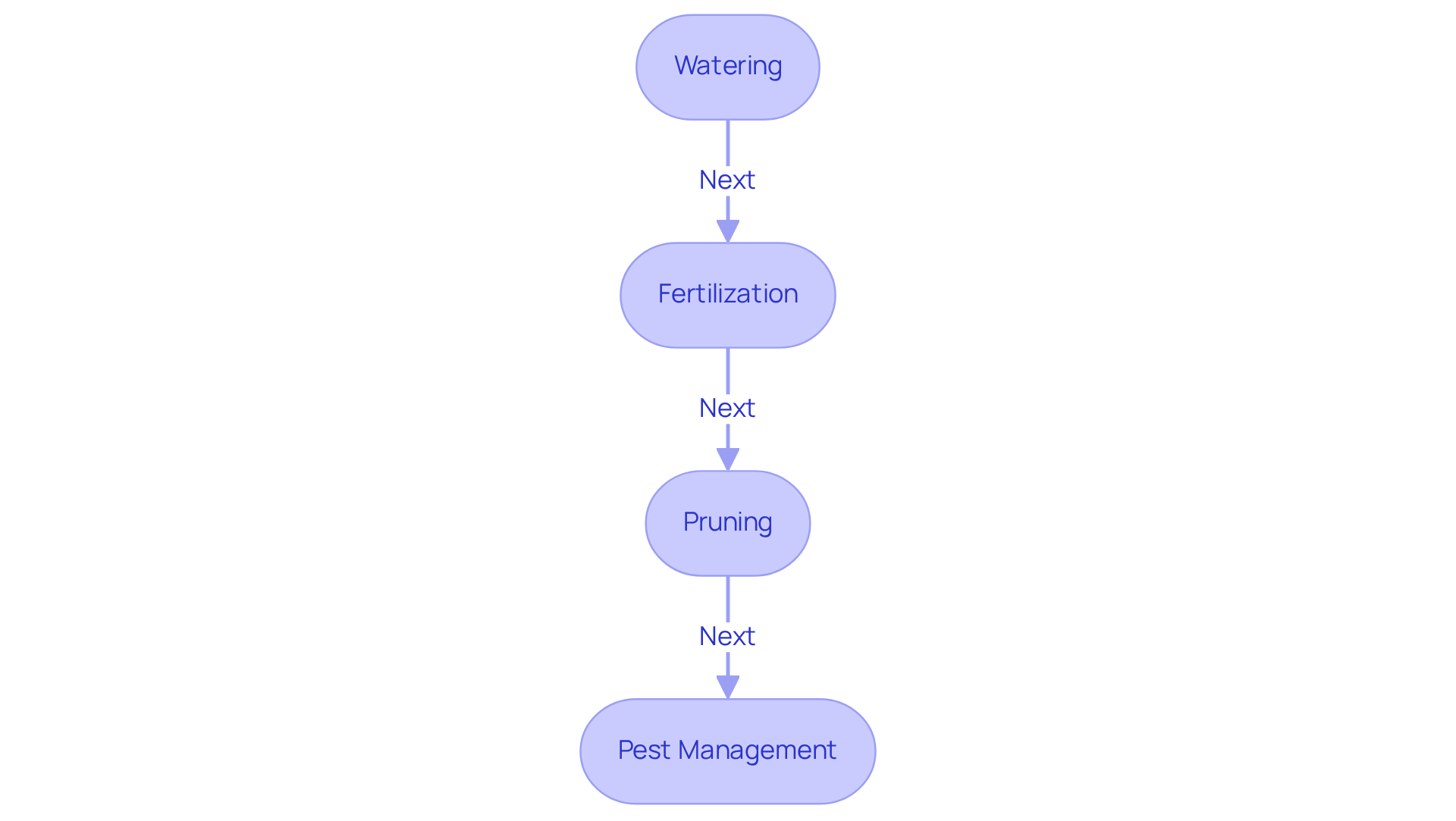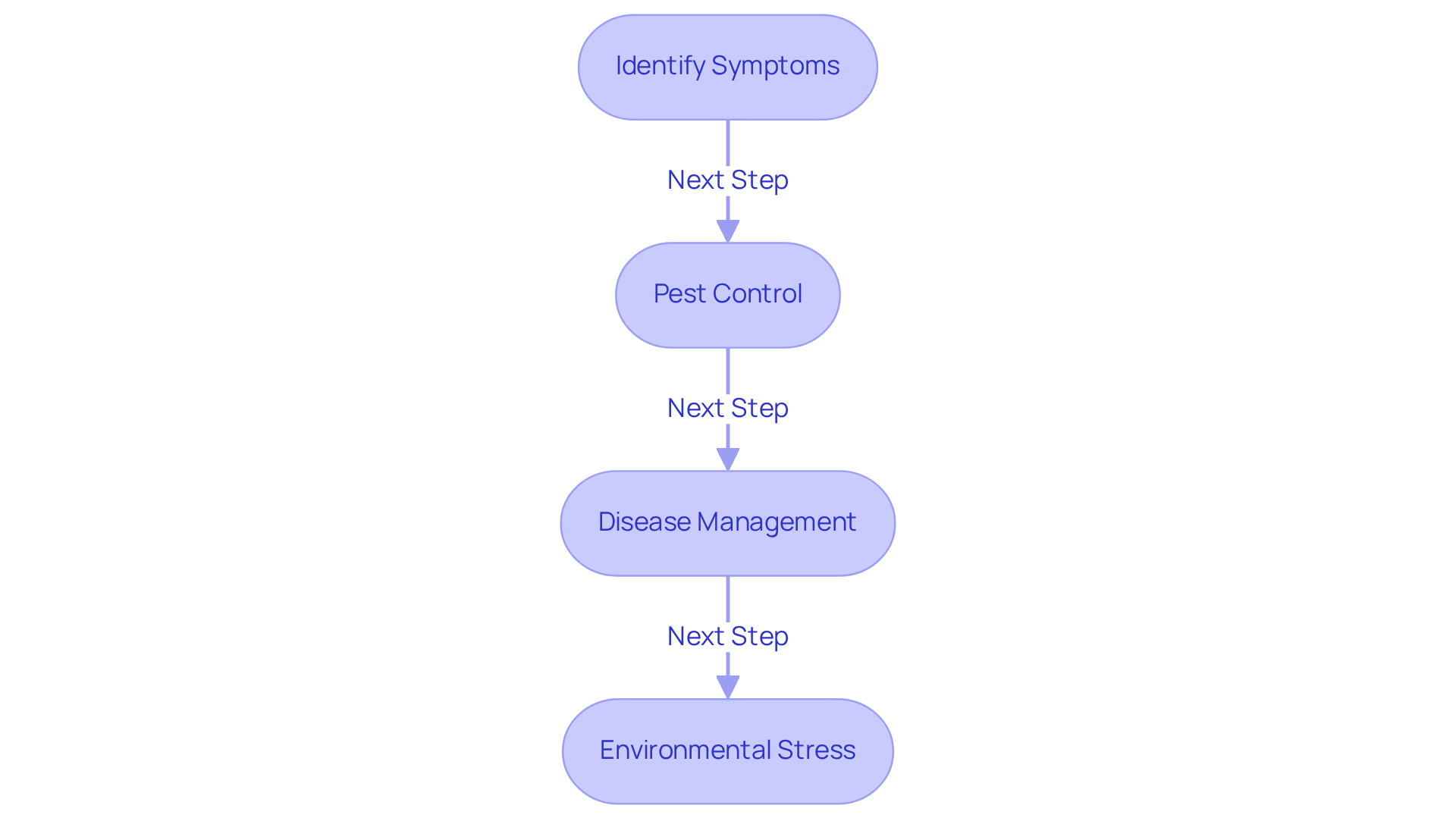
4 Steps to Successfully Grow Your Mahachanok Mango Tree
Share
Growing a Mahachanok mango tree involves more than merely planting a seed; it encompasses the cultivation of a flourishing piece of nature that produces delectable fruits. With proper preparation, care, and knowledge, anyone can transform their garden into a tropical oasis, filled with the sweet fragrance of ripe mangoes.
However, the path to successful cultivation often prompts essential questions:
- What are the key steps to ensure the tree thrives?
- What challenges may arise during this journey?
This guide explores the four vital steps for growing a Mahachanok mango tree, providing gardeners with the necessary tools and insights to nurture their plants from seedling to harvest.
🛒 Buy Maha chanok mango tree at Everglades Farm.
1. Prepare Your Site and Gather Necessary Tools
-
Choose the Right Location: Selecting a site that receives full sunlight for at least 8 hours daily is crucial, as these plants thrive in bright conditions. It is essential to ensure that the area has excellent drainage to prevent waterlogging, which can damage the roots and hinder growth.
-
Gather Necessary Tools: Equip yourself with essential tools such as a shovel, garden rake, watering can or hose, and mulch. Additionally, consider utilizing testing kits to evaluate pH levels and overall ground quality, ensuring ideal conditions for your fruit plant.
-
Prepare the Soil: Begin by clearing the planting area of grass and weeds. Dig a hole that is twice as wide and deep as the root ball of your fruit plant, allowing ample space for root expansion. To enhance the ground, mix in organic matter like compost, which improves both fertility and drainage.
-
Check Soil pH: The optimal pH range for these fruit-bearing plants is between 5.5 and 7.5. Utilize a testing kit to verify the pH level of your soil. If modifications are necessary, adjust the soil accordingly to establish the best conditions for your fruit plant's development.

2. Plant Your Mahachanok Mango Tree
-
Position the Tree: Center the mango tree in the planting hole, ensuring the top of the root ball is level with the surrounding soil. This positioning is essential to prevent the roots from being buried too deep, which can hinder development and affect overall yield. Proper root ball positioning maximizes light interception and promotes healthy growth. Similar best practices apply when planting soursop plants, underscoring the importance of location and orientation.
-
Backfill the Hole: Carefully fill the hole with modified earth, gently packing it down to eliminate air pockets. Avoid compacting the ground too tightly, as excessive compaction can restrict root growth and hinder the plant's ability to establish itself. This principle is equally crucial for soursop and other tropical fruit plants, ensuring they have the best chance to flourish.
-
Water Thoroughly: After planting, provide deep watering to help settle the soil around the roots. Ensure that the water penetrates well, promoting effective root establishment and reducing transplant shock. Sufficient watering is vital, particularly in the initial phases, to foster the plant's growth and resilience. This practice is equally important for soursop plants, which require consistent moisture to thrive.
-
Add Mulch: Apply a layer of organic mulch around the base of the plant, keeping it a few inches away from the trunk. This practice helps retain moisture, suppress weeds, and regulate soil temperature, creating a favorable environment for growth. Mulching not only aids the plant but also aligns with sustainable gardening methods advocated by Everglades Farm. These advantages extend to other tropical fruit plants, including soursop, making it a valuable technique for any home gardener.
By following these steps, you can ensure a successful planting experience for your mahachanok mango tree, contributing to a fruitful garden that reflects the joy of home gardening.

3. Maintain and Care for Your Mahachanok Mango Tree
-
Watering: Ensure your mango plant receives deep watering every 1-2 weeks for the first few years to establish strong roots. During the growing season, adjust this frequency based on rainfall and temperature, as young plants may require more frequent watering. This practice is essential for promoting healthy root development, which is crucial for the overall vitality of the plant.
-
Fertilization: To support robust growth and fruiting, apply a balanced fertilizer, such as a 10-10-10 formulation, every 6-8 weeks during the growing season. This method satisfies the nutritional requirements of the plant, supplying vital nutrients that improve overall health and yield. Remember, two out of every five people on Earth owe their lives to higher crop outputs made possible by fertilizer, highlighting its significance in gardening.
-
Pruning: Conduct annual trimming to shape the plant and eliminate any dead or diseased branches. This practice not only promotes better air circulation and sunlight penetration—mango plants require at least 6 hours of full sunlight every day—but also encourages healthier fruit development. Regular pruning is essential for maintaining an aesthetically pleasing and productive mahachanok mango tree.
-
Pest Management: Regularly inspect your mango plant for common pests like aphids and mealybugs. If infestations arise, employ organic insecticides or neem oil to handle the situation efficiently, ensuring the plant stays healthy and productive. Maintaining the health of the mahachanok mango tree is crucial for maximizing fruit yield and quality, which makes pest management an integral part of cultivating this variety.

4. Troubleshoot Common Issues in Mango Tree Care
-
Identify Symptoms: Observe your fruit-bearing plant for distress signals, including yellowing leaves, stunted development, or unusual spots. Such symptoms often indicate nutrient deficiencies or pest infestations that require immediate attention. Maintaining leaf nitrogen content between 15-18 g/kg DW is crucial to minimize internal flesh breakdown and ensure healthy growth.
-
Pest Control: Promptly address any pest issues by using insecticidal soap or neem oil. Regular inspections are essential for early detection of infestations, allowing for timely intervention and minimizing damage. Notably, 79% of reviews for Everglades Farm rate their service as five stars, reflecting their commitment to quality and customer satisfaction.
-
Disease Management: Fungal infections, particularly anthracnose, can threaten fruit plants. To reduce humidity around the leaves, ensure proper air circulation and avoid overhead watering. If necessary, apply fungicides as a preventive measure to safeguard your plant's health.
-
Environmental Stress: Protect your mahachanok mango tree from extreme weather conditions. In anticipation of frost, cover the plant with frost cloths. During heat waves, ensure consistent watering to prevent heat stress and maintain optimal growth. Be aware that water-stressed trees, including the 'mahachanok mango tree', can experience a 34% reduction in fruit size, emphasizing the importance of regular watering.

Conclusion
Successfully cultivating a Mahachanok mango tree involves a series of well-defined steps that ensure optimal growth and fruit production. From selecting the right location and preparing the soil to maintaining the tree through proper watering, fertilization, and pest management, each aspect plays a crucial role in the overall health of the plant. By following these guidelines, gardeners can create a thriving environment for their mango trees.
Key insights from this guide highlight the importance of site preparation, which includes ensuring adequate sunlight and drainage, as well as the correct planting techniques that promote root development. Regular maintenance practices, such as annual pruning and vigilant pest control, are essential for preventing common issues that could hinder growth and fruit yield. Understanding and addressing the environmental needs of the Mahachanok mango tree can lead to a bountiful harvest.
In conclusion, nurturing a Mahachanok mango tree not only enhances the beauty of your garden but also provides delicious fruit for enjoyment. Embracing these cultivation techniques empowers gardeners to take an active role in their gardening journey, fostering a deeper connection with nature and the satisfaction of homegrown produce. Whether you are a seasoned gardener or a novice, committing to these practices will yield rewarding results, making the effort well worth it.
Grow Your Own Mahachanok Mangoes Today!
Start your gardening journey with Everglades Farm and enjoy the taste of homegrown tropical fruits.
Frequently Asked Questions
What is the importance of choosing the right location for planting fruit plants?
Choosing a location that receives full sunlight for at least 8 hours daily is crucial for fruit plants, as they thrive in bright conditions. Additionally, the area should have excellent drainage to prevent waterlogging, which can damage the roots and hinder growth.
What tools are necessary for preparing a site for planting fruit plants?
Essential tools include a shovel, garden rake, watering can or hose, and mulch. It is also beneficial to use testing kits to evaluate pH levels and overall ground quality to ensure ideal conditions for the plants.
How should I prepare the soil before planting fruit plants?
Begin by clearing the planting area of grass and weeds. Dig a hole that is twice as wide and deep as the root ball of your fruit plant to allow ample space for root expansion. Mixing in organic matter like compost can enhance the soil's fertility and drainage.
What is the optimal pH range for soil when planting fruit-bearing plants?
The optimal pH range for these fruit-bearing plants is between 5.5 and 7.5. It is recommended to use a testing kit to verify the pH level of your soil and make necessary adjustments to create the best conditions for plant development.


